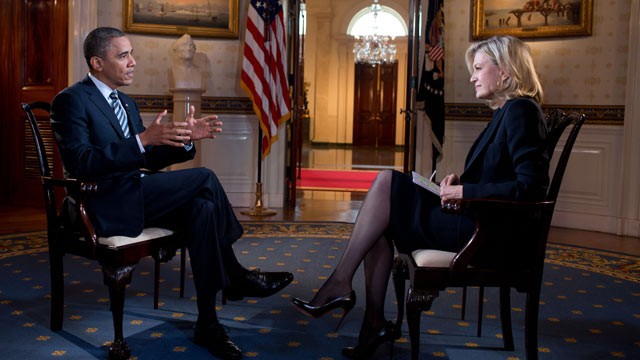Botched in Benghazi
New evidence on the Libya debacle and false White House spin.
Updated October 11, 2012, 1:21 p.m. ET
Among the revelations:
- There was no public demonstration whatsoever against an anti-Islam video, or any other grievance, outside the consulate in Benghazi the night of the attack.
For more than a week afterwards, Obama Administration officials said the attacks were the result of a demonstration triggered by anger over a YouTube video, as were protests earlier in the day in Cairo.
"Putting together the best information that we have available to us today, our current assessment is that what happened in Benghazi was in fact initially a spontaneous reaction to what had just transpired hours before in Cairo, almost a copycat of the demonstrations against our facility in Cairo, which were prompted, of course, by the video," said U.S. Ambassador to the United Nations Susan Rice on September 16 on NBC's "Meet the Press."
On Tuesday night, a State Department official said, "That was not our conclusion."
- The frontal attack by an extremist militia group with links to al Qaeda was recognized as such by some Obama Administration officials within 24 hours. Testifying on Wednesday, Lieutenant Colonel Andrew Wood, a Utah National Guard Green Beret who commanded a 16-member security team in Tripoli, said the attacks were "instantly recognizable as a terrorist attack. . . . I almost expected it to come."
- The State Department denied repeated requests to improve security at the Libyan mission. It kept the consulate in Benghazi open after Britain and the Red Cross had pulled out of the city after security deteriorated this year. No special security measures were in place for the anniversary of 9/11.
Eric Nordstrom, a State official who was the regional security officer in Libya until June, told the committee about a "complete and total absence of planning" for security. The U.S. was relying on a Libyan government that was "overwhelmed and could not guarantee our protection," according to an October 1 memorandum written by Mr. Nordstrom.
Oversight and Government Reform Chairman Darrell Issa has forced the Administration to start to answer for this stunning and deadly assault on U.S. sovereign soil in Libya, but a lot of questions demand further investigation.
Were warnings of an imminent threat ignored?
Was incompetence or a systemic failure to blame for the security lapse?
The most immediate question concerns the Administration's response, and this is where electoral politics deserves to come in. Ms. Rice has defended her false and misleading statements by saying she was reading off a script prepared by U.S. intelligence—apparently a script not shared with the State Department she formally reports to.
It'd be instructive to know who provided her this script, and whether or not she spoke to White House political aide David Plouffe or the Chicago campaign office as she prepared for her Sunday TV show appearances on September 16.
It has been stated in several articles that what happens in the State Department does not always get to the White House or the President, until after the fact. The State Department has so many layers that sometimes even Hilary Clinton the Secretary of State does not know what is going on in her own Department. That was also brought out in the hearings. WHAT'S UP.... WITH THAT? I am not on either side of this, someone, some department failed in what they needed to do. The Pentagon did not offer extended security, the State Department did not agree to extending security forces, for what ever reason, the idea that the State Department would have to reimburse the Pentagon (in money, of course) for the hiring of those extra soldiers, to me seems ridiculous, our military should be used to secure our embassies, their staff from terrorist, militants, and rowdy citizens. Mr Issa and his committee is a little lopsided, is on a witch hunt, and has been on one since Obama has been elected in 20o8.I listened to the hearing, and Mr Cummings stated that the democrats on the committee did not get all of the evidence that the republicans did. Now if that is true, that is illegal, and really partisan. Which shows you what side of the isle this committee is really working, it is not bipartisan. IS IT?
Ms. Rice's Sunday story happened to fit the narrative offered by White House spokesman Jay Carney two days earlier that a rogue video had caused the anti-American demonstrations, which also fit the Obama campaign narrative that the President has made the U.S. more popular and that terrorism is on the wane in the world. A terror attack that killed Americans in Benghazi blows up that happy tale.
In a campaign speech Monday night, President Obama kept at it, saying that "al Qaeda is on its heels and Osama bin Laden is no more." The second half of the sentence is true. But the more we learn about what happened in Benghazi, the more the first sounds like fantasy, and the less Americans can trust this White House to tell them the truth.





